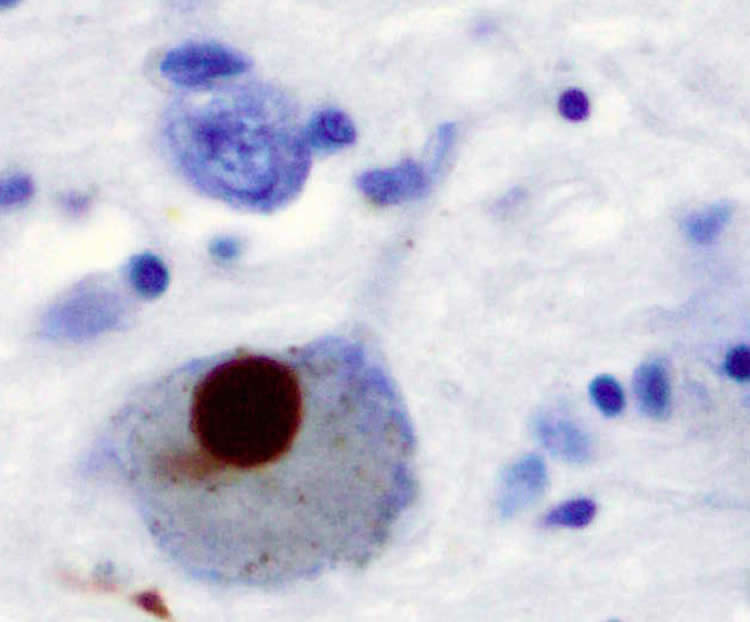Summary: Hippocampal shrinkage may could signify people with memory problems could develop Lewy body dementia rather than Alzheimer’s disease, a new study reports.
Source: AAN.
A lack of shrinkage in the area of the brain responsible for memory may be a sign that people with thinking and memory problems may go on to develop dementia with Lewy bodies rather than Alzheimer’s disease, according to a new study published in the November 2, 2016, online issue of Neurology. Shrinkage in this hippocampus area of the brain is an early sign of Alzheimer’s disease.
Dementia with Lewy bodies is a common form of dementia. Because it has many symptoms in common with Alzheimer’s and Parkinson’s disease, it can be difficult to diagnose. It can include movement problems, sleep disorders and hallucinations.
“Being able to identify people who are at risk for dementia with Lewy bodies is important so they can receive the correct treatments early on,” said study author Kejal Kantarci, MD, MS, of the Mayo Clinic in Rochester, Minn., and a member of the American Academy of Neurology. “Early diagnosis also helps doctors know what drugs to avoid–up to 50 percent of people with dementia with Lewy bodies have severe reactions to antipsychotic drugs.”
For the study, 160 people with thinking and memory problems, called mild cognitive impairment, had brain MRI scans at the start of the study to measure the size of the hippocampus. They also had yearly tests for an average of two years. During that time, 61 people, or 38 percent, developed Alzheimer’s disease and 20 people, or 13 percent, progressed to probable dementia with Lewy bodies. It is called probable dementia with Lewy bodies because the disease can be diagnosed definitively only by an autopsy after death.
The people who had no shrinkage in the hippocampus were 5.8 times more likely to develop probable dementia with Lewy bodies than those who had hippocampal shrinkage. A total of 17 out of the 20, or 85 percent, of people who developed dementia with Lewy bodies had a normal hippocampus volume; while 37 of the 61, or 61 percent, of people who developed Alzheimer’s disease had shrinkage in the hippocampus.

The relationship was even stronger when researchers looked only at people whose thinking problems did not include memory issues. Dementia with Lewy bodies does not always affect memory; thinking skills that are affected usually include attention, problem solving, and the ability to interpret visual information.
Kantarci noted that diagnosis of dementia with Lewy bodies and Alzheimer’s disease can also be difficult because some people have signs of both diseases in their brains. She said this research should be confirmed with studies that use autopsies for final diagnoses.
Funding: he study was supported by the National Institutes of Health, Mangurian Foundation and Robert H. and Clarice Smith and Abigail Van Buren Alzheimer’s Disease Research Program.
Source: Renee Tessman – AAN
Image Source: This NeuroscienceNews.com image is for illustrative purposes only.
Original Research: Abstract for “Hippocampal volumes predict risk of dementia with Lewy bodies in mild cognitive impairment” by Kejal Kantarci, Timothy Lesnick, Tanis J. Ferman, Scott A. Przybelski, Bradley F. Boeve, Glenn E. Smith, Walter K. Kremers, David S. Knopman, Clifford R. Jack, Jr, and Ronald C. Petersen in Neurology. Published online November 2 2016 doi:10.1212/WNL.0000000000003371
[cbtabs][cbtab title=”MLA”]AAN. “New Theory Debunks Idea That Math Abilities Are Inate.” NeuroscienceNews. NeuroscienceNews, 3 November 2016.
<https://neurosciencenews.com/lewy-body-dementia-brain-volume-5430/>.[/cbtab][cbtab title=”APA”]AAN. (2016, November 3). New Theory Debunks Idea That Math Abilities Are Inate. NeuroscienceNews. Retrieved November 3, 2016 from https://neurosciencenews.com/lewy-body-dementia-brain-volume-5430/[/cbtab][cbtab title=”Chicago”]AAN. “New Theory Debunks Idea That Math Abilities Are Inate.” https://neurosciencenews.com/lewy-body-dementia-brain-volume-5430/ (accessed November 3, 2016).[/cbtab][/cbtabs]
Abstract
Hippocampal volumes predict risk of dementia with Lewy bodies in mild cognitive impairment
Objective: To predict the risk of probable dementia with Lewy bodies (DLB) competing with Alzheimer disease (AD) dementia by hippocampal volume (HV) in patients with mild cognitive impairment (MCI) with impairments in amnestic or nonamnestic cognitive domains.
Methods: Patients with MCI (n = 160) from the Mayo Clinic Alzheimer’s Disease Research Center, who participated in an MRI study at baseline from 2005 to 2014, were followed with approximately annual clinical evaluations. HVs were analyzed from 3T MRIs using FreeSurfer (5.3). Hippocampal atrophy was determined from the most normal 10th percentile of the measurement distributions in a separate cohort of clinically diagnosed patients with AD dementia. The subdistribution hazard ratios for progression to probable DLB and AD dementia were estimated by taking into account the competing risks.
Results: During a median (range) follow-up of 2.0 (0.7–8.1) years, 20 (13%) patients with MCI progressed to probable DLB, and 61 (38%) progressed to AD dementia. The estimated subdistribution hazard ratio (95% confidence interval) for normal HV relative to hippocampal atrophy for progression to AD dementia was 0.56 (0.34–0.91; p = 0.02) after taking into account the competing risks. The estimated hazard ratio for normal HV relative to hippocampal atrophy for progression to probable DLB was 4.22 (1.42–12.6; p = 0.01) after adjusting for age and after including the MCI subtype in the model.
Conclusions: Preserved hippocampal volumes are associated with increased risk of probable DLB competing with AD dementia in patients with MCI. Preservation of HV may support prodromal DLB over AD, particularly in patients with MCI with nonamnestic features.
“Hippocampal volumes predict risk of dementia with Lewy bodies in mild cognitive impairment” by Kejal Kantarci, Timothy Lesnick, Tanis J. Ferman, Scott A. Przybelski, Bradley F. Boeve, Glenn E. Smith, Walter K. Kremers, David S. Knopman, Clifford R. Jack, Jr, and Ronald C. Petersen in Neurology. Published online November 2 2016 doi:10.1212/WNL.0000000000003371






